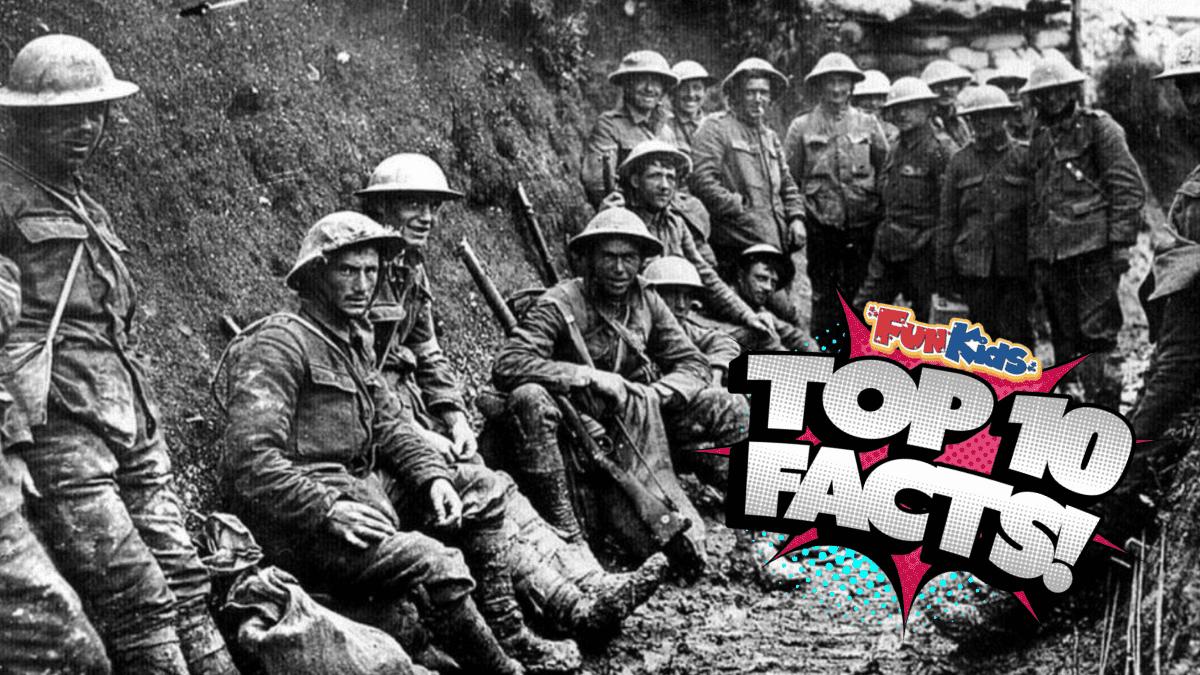Trenches were an integral part of warfare in the early 20th century. They were used extensively during World War I, providing soldiers with a measure of protection from enemy fire. Trenches also served as a form of defence against enemy attacks and provided a way for soldiers to move between positions. We will explore their origins, their uses, and the deadly conditions that soldiers faced while living in them. Let’s dive into the Top 10 Facts about trenches!
1. Trench warfare was started by the Germans in the First World War.
The Germans began trench warfare because they were losing territory. The defeat at the First Battle of Marne would have meant they needed to retreat and lose land. Instead they dug trenches which made it difficult for French and British soldiers to cross.

2. There was 2,490 kilometres of trench lines dug during the First World War.
The trench strategy had originally been planned as a temporary measure but it became the way the war on the western front was fought for years.
More and more trenches were dug until 2,490 kilometres of trenches were dug.
3. Most trenches were between 1-2 metres wide and 3 metres deep.
The first trenches were very basic ditches but as the war continued their design improved.
Trenches were reinforced with wooden beams to help step them collapsing from the weather or shells from enemy blasts.
They were built 3 metres deep to offer protection and there was a stop soldiers could use to see over the top of the trench.
4. Trenches weren’t dug in straight lines.
The First World War trenches were built in a zigzag pattern and even had different levels.
The reason for being built in a zig zag was so that if an enemy got into the trench they couldn’t fire straight down the line. The zig zag pattern also stopped shrapnel being able to fly down the entire trench.
5. The conditions in the trenches caused ‘trench foot’.
The trenches were very muddy, often filled with water and the toilets overflowed.
The conditions were so bad that many soldiers got sick.
Soldiers got ‘trench foot’ from standing in muddy water all day which was very painful and in the worst cases meant they would have to have their foot amputated.

6. Many infectious diseases were spread in the trenches.
Despite having better conditions than in the previous wars, such as the Crimean and South African war, the conditions in the trenches still spread many diseases.
Dysentery, cholera and typhoid fever all spread in the trenches and killed many soldiers. There was lots of rats spreading diseases – soldiers wrote that the rats were as big as cats. There was also lots of lice in the trenches which spread disease too.
113,000 soldiers died from diseases in the trenches.
7. Many soldiers got ‘Shell Shock’ from their time in the trenches.
Soldiers would be constantly scared of the enemy attacking and could hear shells going off. The conditions in trenches made sleeping very hard so soldiers also had very little rest. What the soldiers went through in the war was very upsetting.
There was very little understanding of mental impacts of the war and soldiers with shell shock didn’t receive the treatment they needed. People thought shell shock was caused by the noise of the shells but we now know that it was caused by the horrifying experiences the soldiers had in the war.
There were about 80,000 cases of shell shock in the British army alone during World War I. Soldiers usually had to go back to war after only a few days rest.
8. In the middle of German and British trenches was no man’s land.
In between the allies and enemies trenches was a large stretch of land called no man’s land. This land was seen as not belonging to either side and soldiers would have to cross it to attack the enemy.
9. The food in the trenches was cold.
When it was possible food would be made then put in cooking pots and old jars to take down to the trenches. By the time it reached the trenches it was usually cold.
The main things soldiers ate was corned beef and bread. By the end of 1916 flour was in such short supply that bread was being made with dried ground turnips.
By 1918, the British were sending over 30 million kilograms of meat to the Western Front each month.
Many meals were tinned food such as beef and vegetable stew.

10. On Christmas Day both sides called a truce so they could cross no man’s land safely.
It was Christmas Eve during the first Christmas of the war and soldiers from north sides put down their weapons and met in no man’s land. Some commanders were not happy about it and thought it might be a trick but no guns were fired.
They sang carols together and exchanged food.
On Christmas Day they played a game of football together.
Men from both sides gave gifts to each other. The Germans gave sausages to the British and the British gave the Germans chocolates.
The truce lasted until the New Year in some parts of the Western Front.

Want to learn more about the First World War? Check out our Top Ten Facts about World War I here.
Send us your favourite facts!
Is there something we've missed? Got a fact you're dying to tell us? Submit it below and we could use it on a future Top 10 Facts page!
Remember to always ask an adult before filling out forms online.
Top 10 Facts
From the Tudors to rocks to fish, we have all the best facts right here!
More From Top 10 Facts



